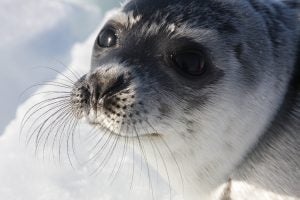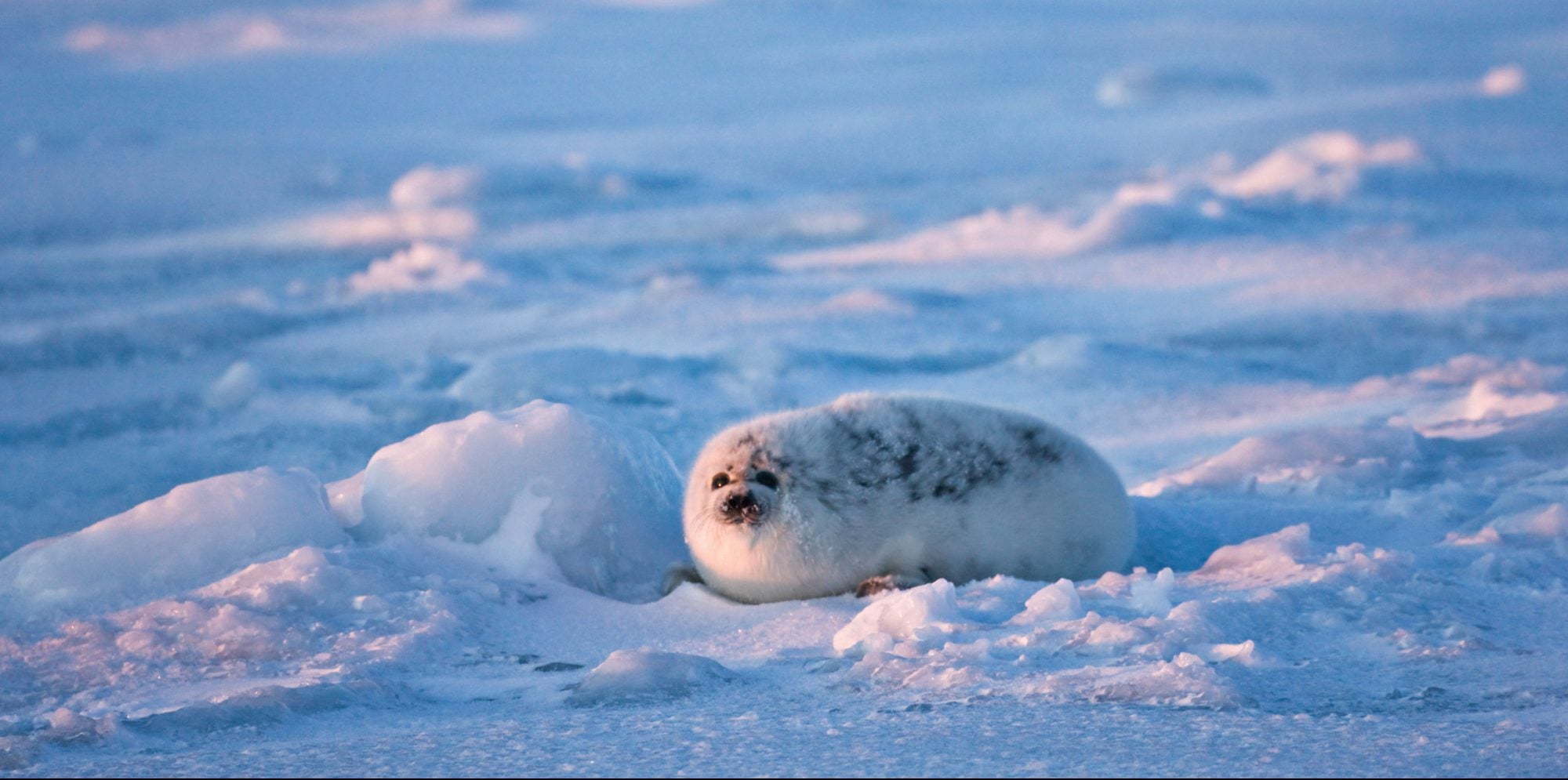
BRUSSELS—Humane Society International celebrated the 10-year anniversary of the historic European Union ban on trade in commercial seal products. The EU ban, a watershed event in the global campaign to stop commercial sealing, was adopted by an overwhelming majority in the European Parliament on 5th May 2009.
The impact of the EU ban — and of the many other seal product trade prohibitions that followed — is undeniable. Prices paid for seal fur in Atlantic Canada have declined by more than 70%, while 90% of licensed commercial sealers no longer participate in the slaughter because it is not profitable for them to do so. As a result, more than 3 million seals have been spared a horrible fate in the past decade alone. International prohibitions on the seal product trade contain clear exemptions for products of indigenous seal hunts.
Rebecca Aldworth, executive director for HSI/Canada, said: “Ten years ago, I watched firsthand as the European Parliament voted to prohibit commercial trade in seal products. In the minutes before the vote, images of so many suffering and dying baby seals kept flashing through my mind. When the vote was in, I knew that the beginning of the end of this brutal industry had just happened. As someone who has observed commercial sealing for 18 years, I will be forever grateful to the EU for its moral leadership and for saving so many seals from a horrible fate.”
Dr Joanna Swabe, senior director of public affairs for HSI/Europe, added: “The adoption of the EU Regulation on trade in seal products was certainly an amazing landmark victory for animal protection, but this was not the end of the story. In the years that followed, the legislation was subjected to and, most importantly, withstood separate spurious legal challenges in the European Courts and at the World Trade Organization. Most importantly, the WTO Appellate Body ruled that, while the legislation needed tweaking, the EU was justified in banning the cruel products of commercial seal hunts on the grounds of public morality. By 2015, I found myself back in the European Parliament talking about seals again as a legislative proposal to amend the ban to make it fully compliant with WTO rules was considered by MEPs. Yet again, the seal product trade ban survived cynical attempts from opponents to water it down and thankfully the EU’s borders remain firmly shut to commercial seal products.”
FACTS
- In 2009, the European Parliament voted 550 to 49 in favor of a strong ban on trade in products of commercial seal hunts. In 2010, the EU ban came into force.
- The commercial seal hunt in Atlantic Canada has been the largest slaughter of marine mammals on earth, with hundreds of thousands of seal pups clubbed and shot to death each year.
- The seals are killed primarily for their fur. The Canadian government notes that the pelts of young seals are the most valuable and not surprisingly, more than 98% of the seals killed each year are less than three months of age.
- The commercial seal hunt in Atlantic Canada is conducted by commercial fishermen who, on average, earn a tiny fraction (less than 5%) of their annual incomes from killing seals. Today, only a few hundred fishermen participate in the annual slaughter.
- Harp seals—the primary targets of the Atlantic Canadian commercial seal hunt—are ice-breeding animals, and climate change is fast destroying their sea ice habitat. According to Garry Stenson, section head for marine mammals for Fisheries and Oceans Canada, “We’re seeing two things: fewer animals pupping and when they do, there is a high mortality with it…The ice isn’t thick and it breaks up before the animal can survive on its own… We’ve been seeing years where ice mortality is very high. We’ve seen dead pups that have drowned. It has a big impact on mortality.”
- To date, more than 37 countries—including the 28 Member States of the European Union—have prohibited trade in products of commercial seal hunts for conservation or animal welfare reasons.
- Canada and Norway challenged the EU ban at the World Trade Organization. In 2013, the WTO upheld the right of the EU to ban the trade in commercial seal products on the grounds of public morality. In 2014, the WTO considered an appeal to that ruling. Although the WTO Appellate Body, once again, ruled largely in favour of the EU, the EU agreed to make minor amendments to the ban to achieve full compliance to WTO rules before 18th October 2015
- The WTO ruling in seals set a legal precedent because it was the very first time that animal welfare has been recognised by the WTO as a legitimate public moral concern.
- In September 2015, the European Court of Justice rejected an appeal brought by commercial sealing interests and some Inuit representatives with regard to the EU ban on trade in seal products. This appeal concerns a 2013 decision by the European General Court, which rejected the appellants’ request to find the legal basis and implementing measures for the EU ban on commercial seal product trade unlawful.
- In October 2013, the Court of Justice of the European Union preserved the EU ban on commercial seal product trade by dismissing an appeal by commercial sealing and fur trade interests and some Inuit representatives. The appeal sought to overturn a 2011 decision from the European General Court that the applicants’ action against the EU ban was inadmissible.
- A separate application to have the EU seal product trade ban overturned was rejected in April 2010.
END
Media contact: Jo Swabe, jswabe@hsi.org


